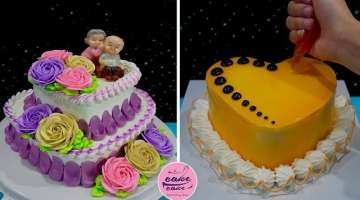African Violets Care – A How to Guide
The colorful blooms of African violets are extra special. They’ll instantly add color to any room.
They’re known to bloom continuously, even throughout the darker months of winter. Place them throughout the house to enjoy their colors and velvety texture throughout the year.
- 1 | 15

Once you get in a regular routine of taking care of African violets, you’ll find they grow very easily.
- 2 | 15

All of their basic needs need to be met though, or they won’t bloom
- 3 | 15

Give them the right temperature, light and a good feeding, and you’ll be blooming in no time!
- 4 | 15

Start off healthy. Choose a plant with bright emerald leaves and the flower color that you want. Make sure the pot has drainage holes.
- 5 | 15

The right light. The most common reason African violets don’t bloom is because they aren’t getting enough light. African violets need indirect sunlight, direct can burn the leaves.
- 6 | 15

Choose a north- or east- facing window for best results.
- 7 | 15

Keep plants away from cold glass and rotate the pot once a week so all leaves receive light
- 8 | 15

Extend daylight by placing African violets under a grow light during winter months.
- 9 | 15

Keep warm. African violets prefer the same temperatures most people find comfortable: between 70-80°F during the day, and around 65–70°F at night.
- 10 | 15

Water from below. Fill the saucer using room temperature water
- 11 | 15

Let sit for about an hour and then pour excess water out. Allow the plant to dry out between waterings.
- 12 | 15

Fertilize with Espoma’s new liquid violet Indoor houseplant food every 2-4 weeks in spring, summer and fall.
- 13 | 15

Think before replanting. African violets only bloom when they’re root bound
- 14 | 15

When it is time to repot, be sure to use an organic potting soil made specifically for African violets, such as Espoma’s African violet mix They flower best in small pots — choose one that’s about a third of the diameter of their leaf spread.
- 15 | 15

Give them the right temperature, light and a good feeding, and you’ll be blooming in no time!



















